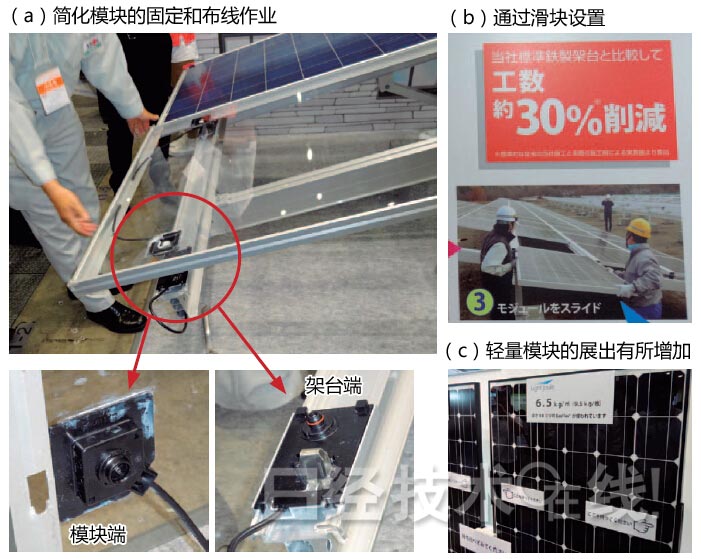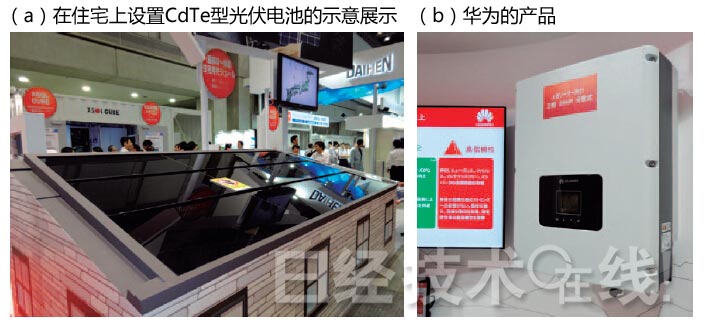"98.0%", "Power Conversion Efficiency No. 1". At the PV Battery Show "PVJapan2014" (July 30th - August 1st, 2014), Mitsubishi Electric personnel wore uniforms with large texts that made them particularly eye-catching. The company announced that it will launch a PV inverter with 98% power conversion efficiency and the highest level of domestic residential use in Japan in January 2015 (Figure 1).
Among domestic residential photovoltaic inverters in Japan, Mitsubishi Electric had the highest power conversion efficiency in 2008, reaching 97.5%. This time the company has set a new record. Its driving force comes from "full SiC", which means that both diodes and transistors use SiC instead of the original Si. This time, Mitsubishi Electric has adopted a self-manufactured power semiconductor module, and will list all-SiC PV inverters before other companies.
The original product uses a "segment control inverter method" that uses three inverters to create an analog sine wave. Compared with a method of converting a square wave into a sine wave by a filter circuit using one inverter, the loss is reduced, but there is also a problem that the number of parts increases. This time, the use of an inverter was changed again and the components were changed from Si to SiC, achieving a 98% efficiency Note 1 and Note 2).

Figure 1: The maximum power conversion efficiency reaches 98.4%.
Mitsubishi Electric will launch a photovoltaic inverter "PV-PN44KX" (a) using a full SiC power semiconductor module. The external dimensions are 460mm x 150mm x 240mm. For power conversion efficiency, the rated time is 98.0% and the maximum is 98.4% (b). The MPPT control method (c) for tracking the maximum power point has also been improved this time. (Pictures are based on Mitsubishi Electric's data)
Note 1) Products using Si with one inverter, diode, and transistor have a power conversion efficiency of 96%.
Note 2) This time, the MPPT (Maximum Power Point Tracking) control algorithm for finding the maximum power point has also been improved. In this way, fast tracking can also be achieved when a large change in the maximum power point due to severe weather changes is encountered. Through this measure, the MPPT efficiency has been increased from 96.7% of the previous product to 99.8%.
The biggest issue for full SiC PV inverters is price. In terms of the suggested retail price, 4.4 kW products are tax-free at 440,000 yen, while 4 kW Si products listed during the same period are excluding tax 340,000 yen, compared to 100,000 yen. Omron also aims to launch full SiC products, but "the price of SiC components is still relatively high, so it cannot be listed for the time being" (Omron commentator). If SiC components are to be reduced in cost as wafers are increased in diameter, the market for all-SiC products is expected to increase.
Respond to rising labor costs
In addition, at PV Japan 2014, the technical proposal that made setting easy was also eye-catching. In Japan, due to the post-disaster reconstruction of the Great East Japan Earthquake and the promotion of the Tokyo Olympic venues, labor costs such as construction projects continue to soar. Its impact has allegedly begun to affect the construction of photovoltaic power generation facilities.
In order to cope with the increase in labor costs, photovoltaic power system vendor Japan XSOL Corporation has developed a new construction method. This method only needs to fasten the photovoltaic cell module and the components of the stand to fix the module and even complete the wiring (Figure 2). In the past, it was necessary to set up modules on the platform to implement wiring between modules. According to the company's calculations, the total construction time can be reduced to approximately 1/4 and the number of operations reduced to approximately 1/2 with the addition of construction methods that do not require foundation treatment.

Figure 2: Proposals to make setup easy
XSOL has developed a construction method (a) in which fixing and wiring can be performed simply by fastening the photovoltaic cell module and the frame member. Kyocera can reduce man-hours by about 30% (b) by using a construction method that pushes the module into the gap between the platforms to slide it. At this exhibition, the display of lightweight modules that can be carried by a small number of people has increased (c)
The realization of the new construction method stems from the fact that, with the assistance of the module manufacturer, special components have been previously set up on the module. If these institutions and components that are intended to make setup easier become popular, then module manufacturers must also take corresponding countermeasures.
Provide CdTe photovoltaic cells to residential
In Japan, the purchase price of photovoltaic power generation has gradually declined. From the point of view of a system with a capacity of more than 10 kW, it has dropped from the initial tax-free rate of 40 yen/kWh to 32 yen/kWh without tax. However, the participation enthusiasm of overseas manufacturers does not appear to have weakened (Figure 3).

Figure 3: Overseas companies are also actively exploring the Japanese market
First Solar and XSOL signed a CdTe photovoltaic cell supply agreement (a). West Holdings purchases the photovoltaic inverter (b) from Huawei Technologies.
On July 28, 2014, the first solar company of the United States (First Solar) signed an agreement to supply CdTe photovoltaic cells to XSOL. The goal is to achieve an annual supply of 100 MW. XSOL will not only provide CdTe-type photovoltaic cells to industrial applications but also to residential uses. This time PVJapan2014 made a schematic display on residential roofs.
The Chinese manufacturer Huawei Technologies (Huawei Technologies also participated in the PV cell exhibition for the first time in Japan. Huawei announced the purchase of its photovoltaic inverter by West Holdings in Japan in May 2014. West Holdings will avoid the PV inverter by opening up new suppliers. The problem of slow construction caused by insufficient transformers (Reporter: He Jiji, “Nikkei Electronicsâ€)
Concealed Shower System,Recessed Shower System,Concealed Rain Shower System,Stainless Steel Thermostatic Rain Shower
kaiping aida sanitary ware technology co.,ltd , https://www.aidafaucets.com